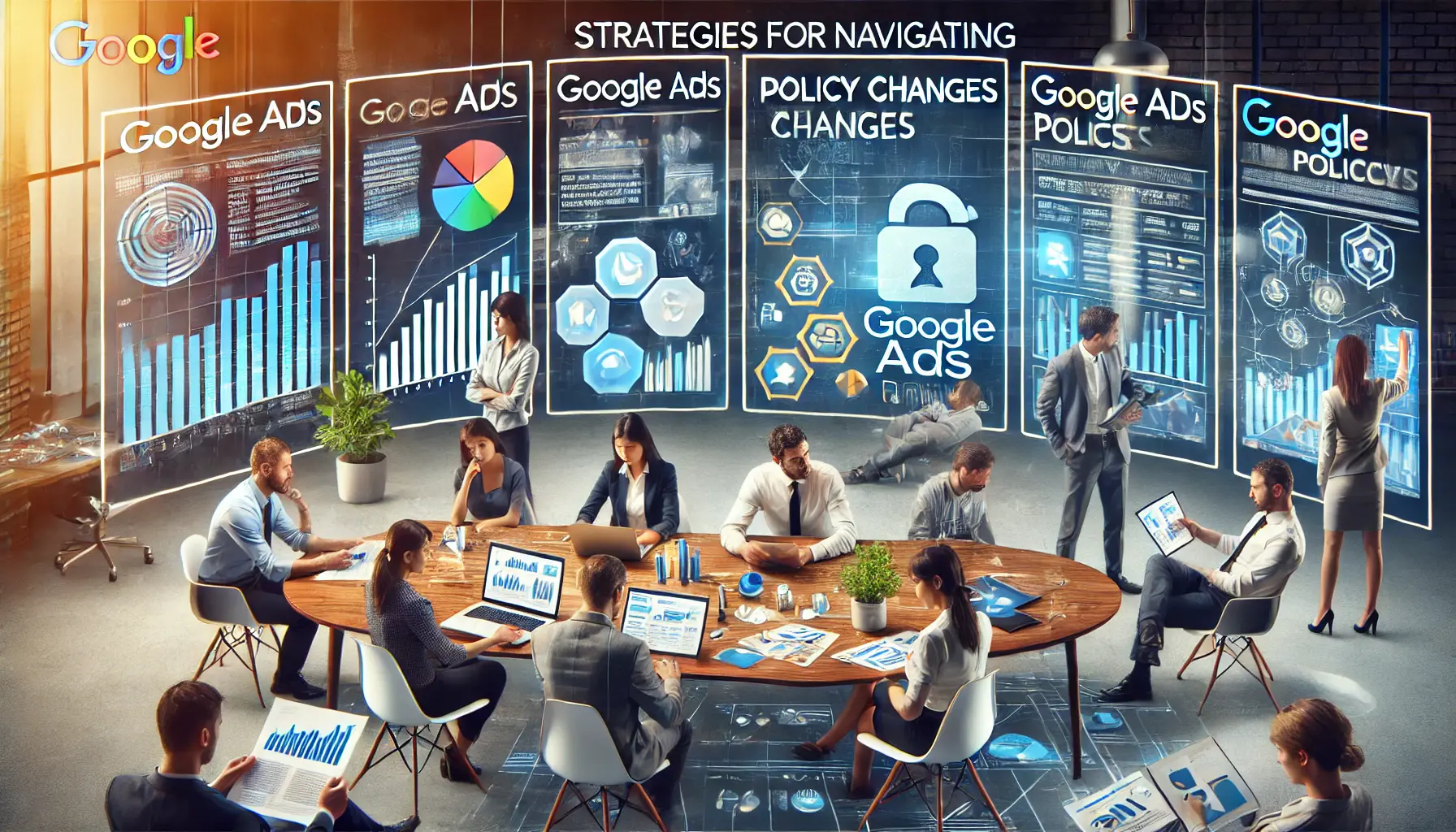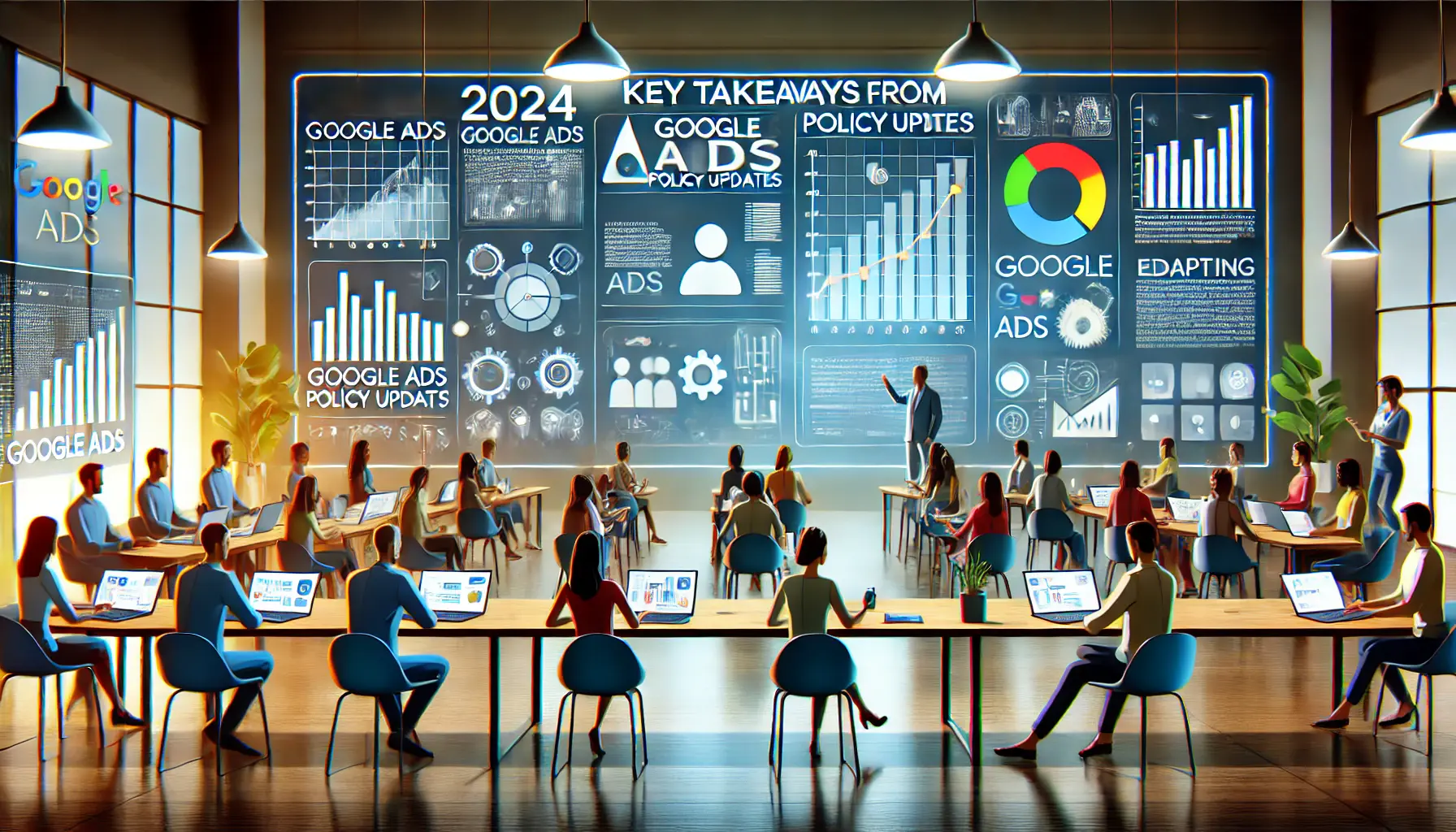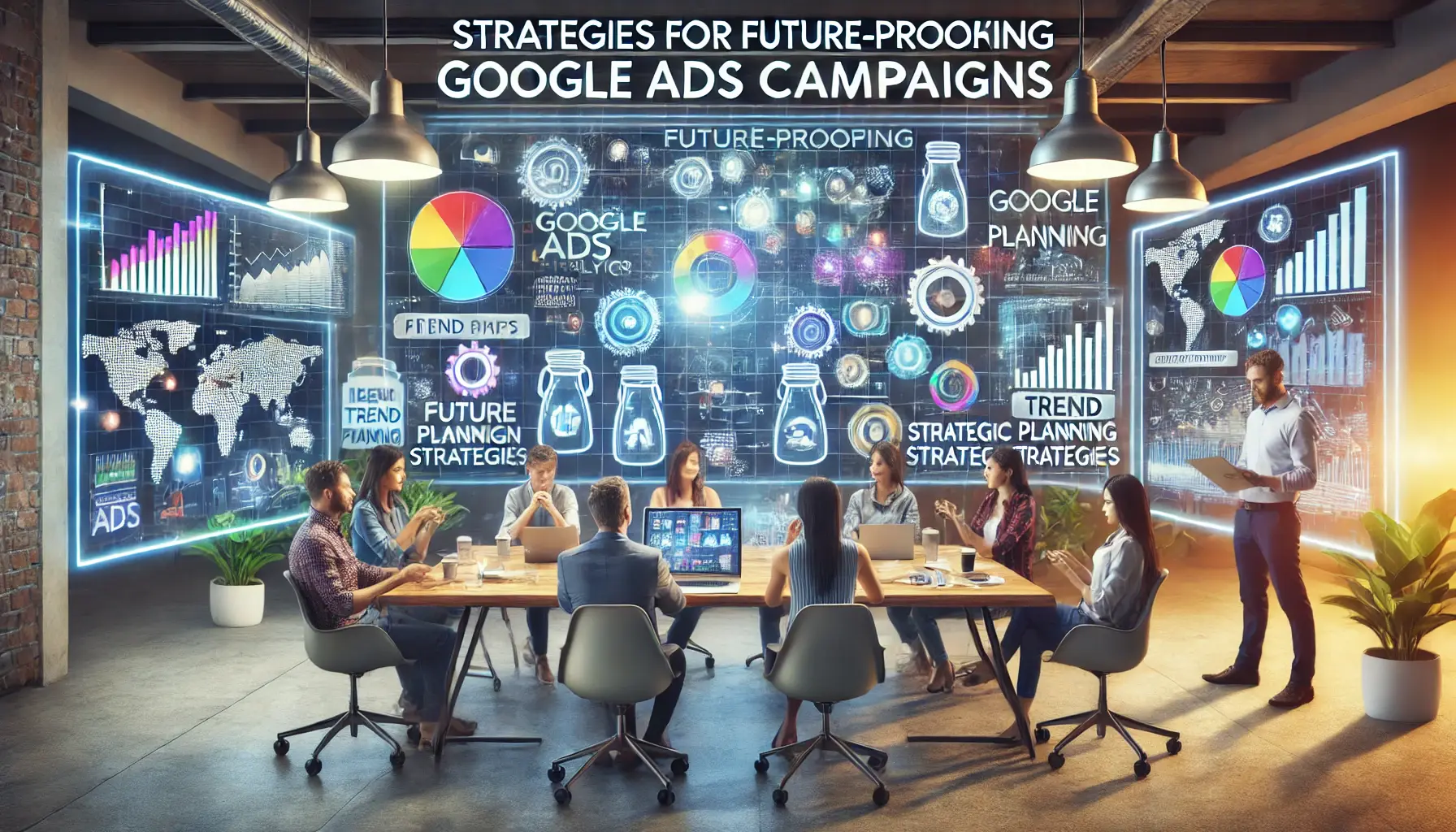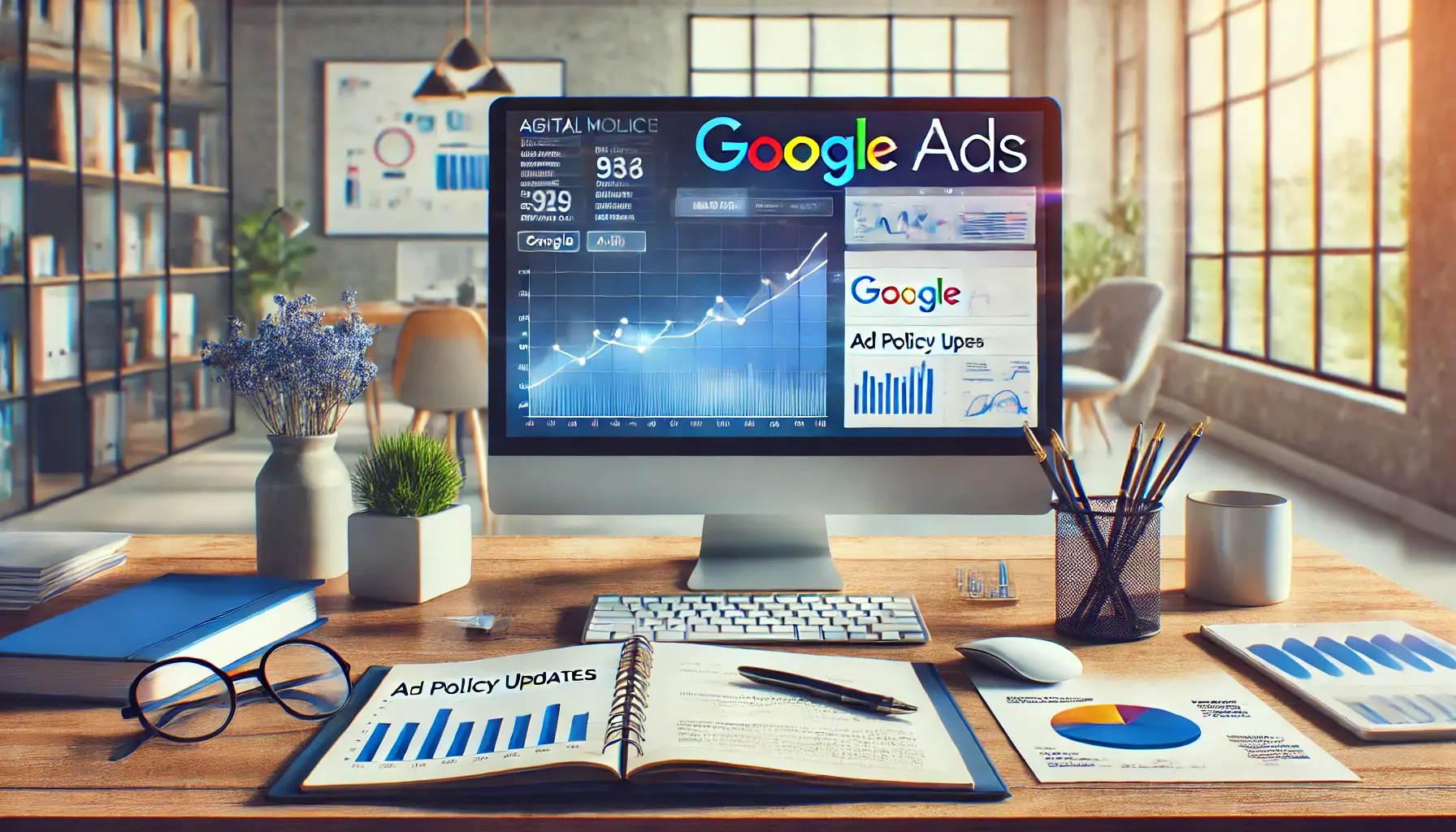The landscape of digital advertising is constantly evolving, and Google Ads, as a leading platform, frequently updates its policies to reflect these changes.
In 2024, significant updates to Google Ads’ ad policies have been introduced, impacting how advertisers create and manage their campaigns.
Understanding these updates is crucial for marketers and businesses to ensure compliance and optimize their advertising strategies effectively.
This article delves into the latest ad policy updates in Google Ads for 2024.
We will explore the changes in detail, discussing their implications and how they can be leveraged for more effective advertising.
By staying informed about these updates, advertisers can adapt their strategies to meet new standards and capitalize on the opportunities these changes present.
- Introduction to 2024’s Google Ads Policy Changes
- Enhancements in Ad Formats and Features
- Advancements in AI and Automation in Google Ads
- Updates in Google Ads’ Privacy and Data Policies
- Strategies for Navigating Policy Changes in Google Ads
- Future Outlook: Google Ads in a Rapidly Changing Digital Landscape
- Embracing the Future of Google Ads with Strategic Adaptation
- FAQs on Ad Policy Updates in Google Ads 2024
Introduction to 2024’s Google Ads Policy Changes
The year 2024 has brought a series of updates to Google Ads policies, reflecting Google’s commitment to enhancing user experience and advertiser performance.
These changes are designed to streamline ad operations, improve ad relevance, and ensure user safety.
Advertisers must familiarize themselves with these updates to avoid policy violations and make the most of their ad campaigns.
One of the key updates includes changes to the transparency and targeting policies.
Google is now providing more detailed information about advertisers and their campaigns, depending on the user’s country.
This move aims to increase transparency and trust in the digital advertising ecosystem.
Advertisers need to be aware of these changes to understand how their ads are being presented to users.

Visual representation of transparency in digital advertising.
Impact on Advertiser Transparency
Google’s new transparency policy requires advertisers to disclose more information about their ads.
This includes targeting details, the total number of ad recipients, and the ad’s subject matter.
Such transparency is expected to build user trust and provide a clearer understanding of the ad content.
Advertisers should prepare to provide this additional information and consider how it might affect their ad strategies.
Note: The shift towards more privacy-focused targeting methods may require advertisers to explore new strategies for audience engagement.

Representation of evolving targeting policies in digital advertising.
Changes in Targeting Policies
Alongside transparency updates, Google has also revised its targeting policies.
The updates focus on enhancing user privacy and providing more robust audience solutions.
Advertisers should expect a shift from traditional audience targeting methods to more privacy-centric approaches.
This change requires a strategic rethink of how to reach the desired audience while respecting user privacy.
- Understanding the new transparency requirements
- Adapting to changes in audience targeting
- Ensuring compliance with updated policies
Key Point: Advertisers must adapt to increased transparency and revised targeting policies to stay compliant and effective in their Google Ads campaigns.

Visual representation of advancements in ad formats and features in digital advertising.
Enhancements in Ad Formats and Features
2024 has also seen significant enhancements in Google Ads’ ad formats and features, aimed at improving ad performance and user engagement.
These updates include the introduction of new ad formats and the phasing out of older ones, reflecting Google’s ongoing efforts to optimize the advertising experience on its platform.
One notable change is the discontinuation of certain ad formats, such as Expanded Text Ads, in favor of more dynamic and responsive options.
This shift emphasizes the importance of adaptability in ad content, encouraging advertisers to create ads that are more engaging and effective in capturing user attention.

Visual representation of innovative new ad formats in digital advertising.
Introduction of New Ad Formats
Google Ads has introduced several new ad formats, including more interactive and visually appealing options.
These formats are designed to enhance user engagement and provide advertisers with innovative ways to showcase their products or services.
Advertisers should explore these new formats to find the ones that best align with their marketing objectives and audience preferences.

Visual representation of the transition to responsive ad formats in digital advertising.
Transition to Responsive Ad Formats
The move towards responsive ad formats is a significant shift in Google Ads.
These formats automatically adjust their size, appearance, and format to fit available ad spaces and to match user preferences.
This flexibility allows for more effective ad placements and can lead to improved campaign performance.
Advertisers need to understand how to best utilize these responsive formats for maximum impact.
- Exploring new and interactive ad formats
- Leveraging the flexibility of responsive ad formats
- Maximizing ad performance with innovative designs
Idea: Experiment with different responsive ad formats to determine which ones resonate best with your target audience.
Adapting to these format changes is crucial for advertisers to stay competitive and effective in their digital marketing efforts.
By embracing new ad formats and leveraging the capabilities of responsive designs, advertisers can create more impactful and engaging ad campaigns.

Visual representation of advancements in AI and automation in Google Ads.
Advancements in AI and Automation in Google Ads
The integration of artificial intelligence (AI) and automation in Google Ads has been a major focus in 2024.
These advancements are transforming how advertisers plan, execute, and optimize their campaigns.
AI-driven tools and automated features are designed to simplify campaign management while enhancing performance.
One of the key areas where AI has made a significant impact is in audience targeting and ad personalization.
Google Ads now utilizes advanced machine learning algorithms to better understand user preferences and behaviors, enabling more precise and effective targeting.

Visual representation of AI-driven insights into audience behavior.
AI-Driven Audience Insights
Google’s AI technology offers deeper insights into audience behaviors and preferences.
This allows advertisers to tailor their campaigns more accurately to their target audience, leading to higher engagement and conversion rates.
Advertisers should leverage these AI-driven insights to refine their targeting strategies and improve campaign effectiveness.

Visual representation of enhanced campaign automation in digital marketing.
Enhanced Campaign Automation
Automation in Google Ads has also seen substantial enhancements.
Automated bidding strategies and ad placements are becoming increasingly sophisticated, allowing advertisers to achieve better results with less manual intervention.
Embracing these automated features can save time and resources while optimizing campaign performance.
- Utilizing AI for improved audience targeting
- Exploring automated bidding and ad placement strategies
- Leveraging automation for efficient campaign management
Truth: AI and automation in Google Ads are essential for modern advertisers to remain competitive and efficient in a rapidly evolving digital landscape.
As AI and automation continue to evolve, staying updated and adapting to these technologies is crucial for advertisers.
By effectively integrating AI and automation into their Google Ads strategies, advertisers can enhance campaign efficiency, targeting accuracy, and overall performance.

Visual representation of privacy and data policy updates in Google Ads.
Updates in Google Ads’ Privacy and Data Policies
In 2024, Google Ads has implemented significant updates to its privacy and data policies, reflecting the growing emphasis on user data protection and privacy in the digital advertising industry.
These updates are in line with global data privacy regulations and aim to provide a safer, more transparent online environment for both users and advertisers.
Advertisers need to be aware of these changes to ensure their campaigns are compliant with the new standards.
This includes understanding how user data is collected, processed, and used in advertising campaigns.

Visual representation of enhanced user data protection in digital advertising.
Enhanced User Data Protection
Google Ads has strengthened its user data protection measures, ensuring that user privacy is respected and safeguarded.
This includes more stringent controls on how user data is collected and used in ad targeting.
Advertisers must align their data collection and usage practices with these enhanced privacy standards.

Visual representation of compliance with global data privacy regulations in digital advertising.
Compliance with Global Data Privacy Regulations
The updates in Google Ads’ privacy policies are also designed to ensure compliance with global data privacy laws, such as GDPR and CCPA.
Advertisers operating in multiple regions need to be cognizant of these regulations and ensure their campaigns are compliant.
This may involve adjusting data collection and processing practices to meet different regional requirements.
- Adapting to enhanced user data protection measures
- Ensuring compliance with global data privacy laws
- Revising data collection and usage practices
False Information: Ignoring updates in privacy and data policies can lead to severe consequences, including legal repercussions and loss of user trust.
Understanding and adapting to these privacy and data policy updates is essential for advertisers to maintain user trust, ensure legal compliance, and run successful campaigns.
By prioritizing user privacy and aligning with global standards, advertisers can build stronger, more sustainable advertising strategies.

Visual representation of strategies for navigating Google Ads policy changes.
Strategies for Navigating Policy Changes in Google Ads
Adapting to the 2024 policy updates in Google Ads requires strategic planning and a proactive approach.
Advertisers must not only understand the changes but also implement strategies to navigate these updates effectively.
This involves re-evaluating current advertising practices and making necessary adjustments to align with the new policies.
Staying informed and agile is key to successfully adapting to these changes.
Advertisers should regularly review policy updates, assess their impact on current campaigns, and adjust their strategies accordingly.

Visual representation of the process of revising campaign strategies.
Revising Campaign Strategies
With the introduction of new ad formats, enhanced AI and automation, and stricter privacy policies, advertisers need to revise their campaign strategies.
This may include exploring new ad formats, leveraging AI-driven insights for targeting, and ensuring data practices comply with updated privacy standards.
A thorough review of current strategies will help identify areas for improvement and adaptation.

Visual representation of training and education in digital marketing.
Training and Education
Keeping up with Google Ads’ policy changes requires continuous learning.
Advertisers and their teams should engage in regular training and education to stay abreast of the latest updates.
This can involve participating in webinars, workshops, or online courses focused on Google Ads and digital advertising trends.
- Assessing the impact of policy changes on current campaigns
- Exploring new ad formats and targeting strategies
- Engaging in continuous learning and training
Featured Info: Regular training and staying informed are crucial for advertisers to effectively navigate policy changes in Google Ads.
By proactively revising strategies and investing in continuous learning, advertisers can successfully navigate the policy changes in Google Ads.
This proactive approach will not only ensure compliance but also enhance the effectiveness and efficiency of advertising campaigns.

Visual representation of the future outlook of Google Ads in a changing digital landscape.
Future Outlook: Google Ads in a Rapidly Changing Digital Landscape
As we look towards the future, it’s evident that Google Ads will continue to evolve in response to the rapidly changing digital advertising landscape.
The updates in 2024 are just a glimpse of the ongoing transformation in this space.
Advertisers must stay ahead of the curve by anticipating future trends and preparing for continuous change.
Emerging technologies, evolving user behaviors, and regulatory changes will shape the future of Google Ads.
Advertisers who are adaptable, innovative, and forward-thinking will thrive in this dynamic environment.

Visual representation of the integration of emerging technologies in digital marketing.
Embracing Emerging Technologies
The integration of emerging technologies such as AI, machine learning, and augmented reality will continue to revolutionize Google Ads.
Advertisers should be ready to embrace these technologies to enhance their ad campaigns, improve targeting accuracy, and provide immersive user experiences.

Visual representation of adapting marketing strategies to evolving user behaviors.
Adapting to Evolving User Behaviors
User behaviors and preferences are constantly evolving, and Google Ads will adapt to meet these changes.
Advertisers need to stay in tune with their audience, understanding their needs and preferences to create relevant and engaging ad content.
This requires ongoing research and user engagement.
- Anticipating and adapting to future trends in digital advertising
- Leveraging emerging technologies for innovative ad campaigns
- Staying attuned to evolving user behaviors and preferences
Idea: Regularly conduct audience research to understand changing behaviors and preferences, ensuring your Google Ads campaigns remain relevant and effective.
The future of Google Ads is exciting and full of possibilities.
Advertisers who are prepared to adapt to changes, embrace new technologies, and understand their audience will be well-positioned to succeed in this ever-evolving digital advertising world.

Visual representation of strategic adaptation in the future of Google Ads.
Embracing the Future of Google Ads with Strategic Adaptation
The journey through the 2024 ad policy updates in Google Ads underscores the dynamic nature of the digital advertising landscape.
As we have explored, these changes are not just about compliance but also about seizing opportunities to enhance ad performance and user engagement.
The future of Google Ads is shaped by continuous innovation, and advertisers who adapt strategically will find success.

Visual representation of key takeaways from 2024’s Google Ads policy updates.
Key Takeaways from 2024’s Google Ads Policy Updates
The 2024 updates in Google Ads have brought significant shifts in transparency, ad formats, AI integration, and privacy policies.
These changes reflect Google’s commitment to creating a more user-centric, efficient, and secure digital advertising environment.
Advertisers need to embrace these updates, understanding that they are not just regulatory requirements but opportunities to refine and elevate their advertising strategies.
- Increased transparency and user data protection enhance trust and compliance.
- New ad formats and AI advancements offer innovative ways to engage audiences.
- Adapting to privacy changes is crucial for global compliance and user respect.

Visual representation of strategies for future-proofing Google Ads campaigns.
Strategies for Future-Proofing Google Ads Campaigns
Looking ahead, the key to thriving in Google Ads is adaptability and foresight.
Advertisers must stay informed about emerging trends, continuously update their skills, and be ready to pivot their strategies in response to new developments.
The future of Google Ads will be characterized by rapid technological advancements and evolving user expectations, and staying ahead will require a proactive and innovative approach.
- Regularly update knowledge and skills to keep pace with Google Ads advancements.
- Embrace new technologies and innovative ad formats to stay competitive.
- Anticipate and adapt to changing user behaviors and privacy expectations.
In conclusion, the ad policy updates in Google Ads 2024 are a testament to the platform’s evolution and its response to the broader changes in digital advertising.
By understanding and strategically adapting to these updates, advertisers can not only comply with the new policies but also leverage them to create more effective, engaging, and responsible ad campaigns.
The future of Google Ads is bright, and those who navigate these changes wisely will reap the benefits in this ever-evolving digital world.

Visual representation of FAQs related to Google Ads policy updates.
Your campaigns can be managed by an agency specialized in Google Ads, check out our service page.
FAQs on Ad Policy Updates in Google Ads 2024
Stay informed about the latest changes in Google Ads with these frequently asked questions, tailored to help you navigate the 2024 updates effectively.
Major changes include enhanced ad transparency, new ad formats, AI-driven targeting, and stricter privacy policies for improved user experience and compliance.
The 2024 updates increase ad transparency by requiring advertisers to disclose more detailed information about their ads, including targeting and audience reach.
Google Ads 2024 introduces innovative ad formats, focusing on interactive and responsive designs to enhance user engagement and ad performance.
AI in Google Ads 2024 offers advanced audience insights and automated targeting, enhancing ad relevance and efficiency through machine learning algorithms.
Google Ads 2024 strengthens user data protection and aligns with global privacy regulations, ensuring safer and more compliant data practices.
Yes, the 2024 updates introduce new compliance requirements, particularly in data privacy and ad transparency, to align with global standards.
Advertisers should revise their strategies, embrace new ad formats and technologies, and ensure their practices comply with updated privacy standards.
Post-2024, Google Ads is expected to continue evolving with technological advancements, focusing on user-centric advertising and innovative campaign strategies.










